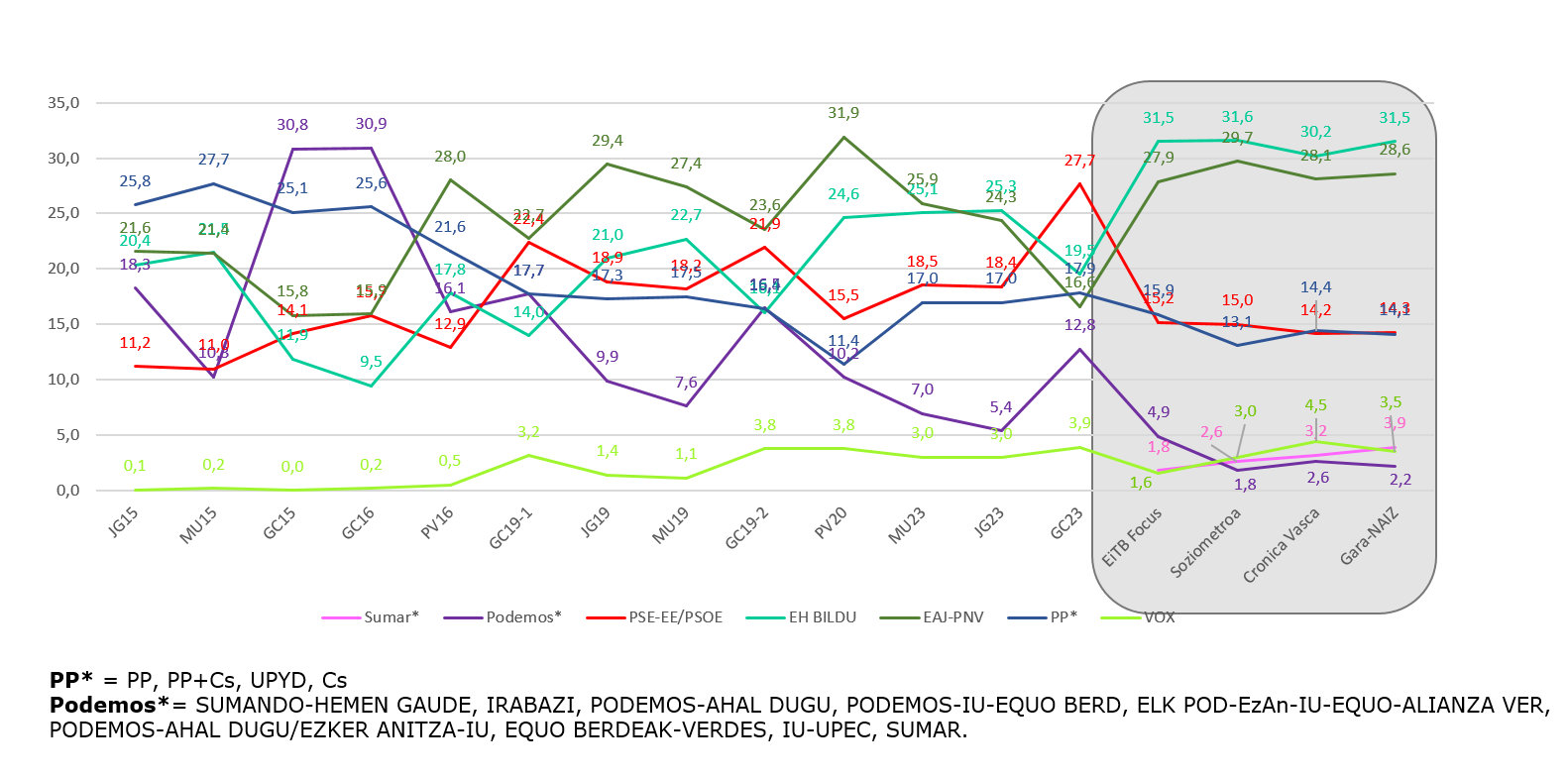

In the Basque Parliament elections on 21 April, competition between the PNV and EH Bildu is becoming a decisive country. To understand this dynamic, it is necessary to analyze the electoral evolution of the last decade in Álava. Three periods can be identified, 2015-16, 2016-20 and 2020 to date. EH Bildu has risen beyond 2016, the PNV grew until 2020 and since then comes down. Consequently, EH Bildu has surpassed the PNV in the last two elections. This establishes a new political context, especially relevant in these elections if Álava is decisive.
According to the latest surveys, competition between EH Bildu and the PNV will increase. Maintaining the upward trend of EH Bildu, he has the opportunity to get the best results of all time, bringing his roof higher. On the contrary, the PNV is about to lose more than seven points of difference with EH Bildu. On another level, PP with a slight recovery can advance the same PSE in full competition. And what was the space of Podemos, divided into two, is about to completely lose its electoral reference and effectiveness.
Election results for Álava 2015/23 and final estimates for the Basque Parliament.

This evolution in Álava must be explained politically and sociologically. From the sociological point of view, the evolution of the country towards Euskaldunization in recent decades is evident. Euskaldunization has come from the bottom up and has already reached middle-aged generations. Since the Basque and the erdaldun have different electoral behaviors, we see consequences for electoral results.
Politically, with a good evaluation of the welfare of citizens, the erosion of the PNV is manifested in the negative perception of public management, especially in Osakidetza and in housing policy. But to put EH Bildu ahead of the PNV, it is not enough to erode the ruling party, but it is also necessary to appear as a solid alternative. In this sense, EH Bildu has come with domestic tasks: his work in the last ten years in the municipalities of the whole country, in the governments and in the opposition; the decisions taken in two legislatures to support the government of the Spanish State and block the extreme right and the policy developed therein; or the agreements reached or tested by the opposition in the Basque Parliament itself, which has projected as a sound and serious alternative.
The bottom line seems to me to be a graph summarizing all of the above. In the latest EiTB Focus survey you can see the age pyramid of candidates to vote PNV and EH Bildu. It's pretty obvious how, from the bottom up, there's change. Until the age of 65, the profile of EH Bildu voters is wider and more balanced than that of the PNV.
Development of EiTB Focus microdata from March. Vote intention in Álava by sex and age.

Consequently, Álava is on the other hand. This change, which had already begun some time ago, now has its electoral reflex. To what extent? We shall see it on 21 April.